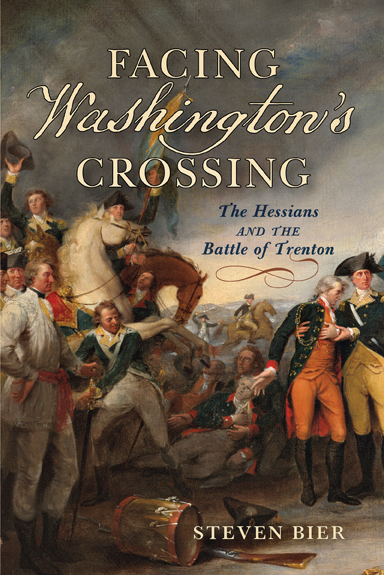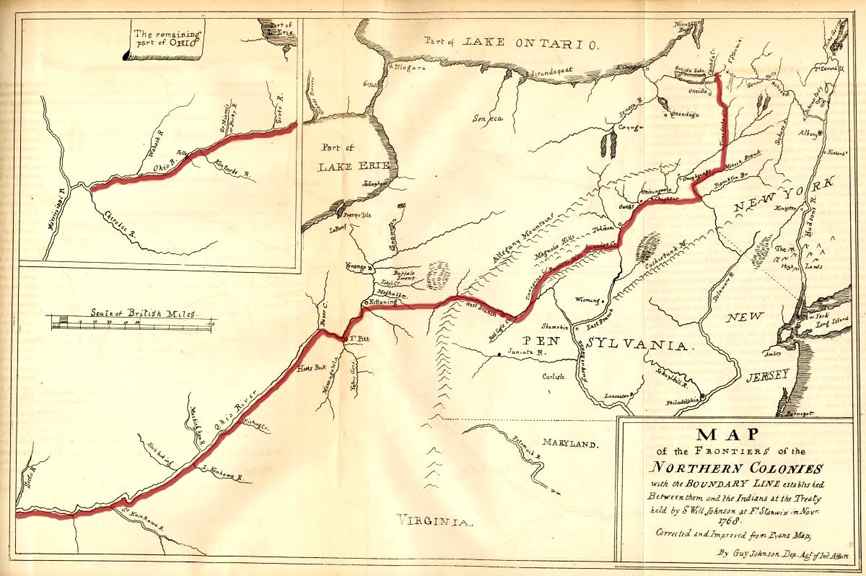For the last two years or more I have been searching for written evidence from the life of Daniel Morgan—who in the twists, turns, and revolutions of his life was variously a homeless boy, teamster, rifleman, landowner, brigadier general, and U.S. congressman.
As I track him, I have been following a trail blazed through the scholarly wilderness by historians who preceded me. I thought I might blaze a new trail, find entirely new evidence that had been buried in archives and locked away from human sight for 200 years. But I encountered few topics which had not already been scouted out or captured by some previous historian.
Nearly every researcher begins by the following the traces and trails laid by predecessors. It’s part of the game; in graduate and academic scholarship it goes by the moniker literature review: Researchers construct a map for their inquiry by collecting the sources in footnotes of earlier publications.
Archival research is akin to hiking a forest trail beaten down by decades of foot traffic, or camping in the Blue Ridge on a site with a fire ring perfectly situated near a flat mossy spot. If you’re like me, you’ll roll out your bag on a cloudless night and imagine that you’re the first to see the stars from that place. But we almost always benefit from the work of those who came before us.
When I began working on a biography of Daniel Morgan, I knew that I would be the beneficiary of my predecessors. It was my great good fortune that one of them was the late Don Higginbotham, who I now know was a careful researcher of considerable persistence and energy. His 1962 biography of Daniel Morgan is a masterpiece of archival investigation, a monument to the use of the card catalog. In archive after archive, Higginbotham discovered documents where he had been told that none existed.
Though Higginbotham broke the trail, even he did not explore wholly unseen territory. He acknowledges several times how indebted he is to his predecessor, James Graham of New Orleans, whose biography of Morgan was published in 1858. Like Higginbotham, the more time I spent with the primary sources, the more I looked upon Graham’s achievement with a kind of awe. Graham did have the advantage of being Morgan’s great-grandson-in-law, and had access to family papers. Not only did he accumulate yet more material, with the help of Washington biographer Jared Sparks, he is also remarkable for what he omitted. Graham did not interlard his story of Morgan’s life with inventions designed to teach moral lessons—even though, at one point, he admits to the temptation to do so.
As I contemplated the trail that Graham and Higginbotham had blazed, I set a goal: I would follow their path closely; I would look at every source they looked at, touch every artifact they had touched. This seemed at the outset a modest, achievable goal. It wasn’t.
For archives, like people, change. Almost always, archives change because of human change. There once was, according to Higginbotham’s notes, a folder in the Frederick County (Virginia) Court House devoted to Daniel Morgan’s lengthy and complicated legal history. I can assure you that not only has it vanished, but that many of the county clerks sitting just fifteen feet away from bound volumes of eighteenth-century court cases had no idea that those volumes existed. They were shocked to discover that they were sitting nearby such ancient history.
To the historian this might seem incredible. But after working among the clerks, and listening to the requests that they field every minute of every hour, I was no longer surprised. They deal with the court cases of last week or last month. They do not spend their time responding to inquiries about eighteenth-century lawsuits.
Perhaps, I mused after a long day with the clerks, when Higginbotham worked in these archives sixty years ago, he collaborated with a county clerk who enjoyed collecting the legal history of the lower Shenandoah Valley. Or perhaps Morgan was better known then because a group of South Carolinians had just attempted to exhume his body and remove it to Cowpens. For whatever reason, circumstances are different, and some aspects of history are more difficult to discover than they once were.
But at least the suit papers which Higginbotham referenced still exist, if now harder to find; sometimes a record can disappear altogether. When I’ve mentioned that to others, they immediately imagine it is the result of theft. Of course theft does happen, most often — in the sources I sought — by autograph hunters. However, I refer not to the disappearance of a single document, but an entire collection. Such a feat requires not a thief but an archivist.
While tracking down a reference to Morgan spending time as a “long hunter” in the Ohio Valley, I dutifully followed Higginbotham’s footnote to a certain collection of papers left by the scion of a famous Virginia family to the Library of Congress. After reviewing several hundred pages of photocopies, the helpful clerk and I were unsuccessful in locating the source. Indeed, I could not figure out why I was reviewing photocopies rather than the original manuscripts Higginbotham’s footnote promised.
Further investigation revealed that the photocopies had been original manuscripts — sixty years before. In the intervening years, a member of that famous Virginia family became irritated with the Library of Congress, and consolidated this part of the papers with a larger collection of the family’s papers. (In the best traditions of Virginian tact I do not name names.)
When I traveled to that collection, hoping to find the source the footnote referred to, I discovered instead that the papers removed from the Library of Congress had been re-cataloged, re-categorized, and dispersed among the entire collection. It was as if someone had picked up a bag of leaves from the curbside, driven to the closest woods, and emptied it out. It was now impossible to discover, without carefully examining every nook and cranny of the archive’s collection, Higginbotham’s original reference to Morgan as long hunter. When I tried, I failed. The reference is probably still in the collection, waiting for a future historian to find it.
This dispersion was not due to archival foolishness. Collections come into an archive in varying states of organization, sometimes classified according to a system that only made sense to a long-dead collector. Standardizing and systematizing is the fundamental work of any librarian or archivist, and historians are perhaps the greatest beneficiaries of those systems.
But Schrodinger’s much-abused cat—simultaneously both alive and dead in a state of quantum superposition–was probably a library’s mascot. One cannot archive or even touch a source, without in some way changing that source, or the location of that source, and in doing so changing our record of the past. Nothing ever remains the same, certainly not archives. Their collections are not flies in amber, static, unchanging, always observable to the careful eye. They are clouds of dust, circulating in a shaft of sunlight, moving with the slightest draft, intake of breath, or motion of the hand. Sometimes pieces of a collection remain swirling in that light, even after the passage of a hand. But every once in a while they are cast away into darkness.
Realizing that is some sort of solace after an unsuccessful hunt. But uncertainty is, as with all hunting, part of the essential attraction of the chase. It is the challenge that lures the historian back to the archive again and again. Perhaps, this morning, I will finally find what I have been looking for all along.








11 Comments
Fascinating look at the day to day research of a historical biographer. Really enjoyed this, my thanks for this post – been looking forward to your upcoming bio on Morgan for quite some time. Cheers to you and Westholme
Thanks for a very interesting piece on one of my heroes. BTW, in doing research for my book on George Washington’s Bastille (Liberty) key (now at Mount Vernon), I found (I like your: In the best traditions of Virginian tact I do not name names) that owners of historic artifacts often give them to museums which later founder, leaving the artifacts gathering dust in some corner, perhaps only to see the light of day again at some garage sale or flea market. Good luck in finding what you’re looking for. I await the publication of your book!
Albert Louis Zambone, your article was a joy to read.
Keep going on as you are and, I bet you twenty bucks, you will find unknown Morgan documents.
I assume you have looked at every mention of Morgan in the great pensions archive being compiled by Will Graves and C. Leon Harris.
Have you looked through all the mentions of Morgan in Newspapers.com, Genealogy Bank, America’s Historical Newspapers, Chronicling America, and all the other newspaper databases?
I don’t go to archives any more but I ALWAYS find unknown, unused documents if I do a rigorous newspaper search. Librarians told my Mecklenburg Declaration hero Scott Syfert that a newspaper article did not exist. Yes it does, in at least one full-page reprint in a northern newspaper. Yesterday I received a book on the 1862 Gainesville, Texas, hangings and see that in the pursuit of cousins several weeks ago I located 19th century comments that Texas historians have not seen. No surprise there! So when you are saving up money and strength for your next archival visits please be sure not to neglect the available databases you can explore at home. Just in case you have not already done all this . . . . and apologies to you if you have.
What a pleasure to read your article was!
I am looking forward to a full biography on Daniel Morgan………
I enjoyed your article. The paragraph analogizing archival search to “Schrodinger’s much-abused cat” sent me scrambling to “Google.”
After flipping through the quick explanation of superposition my thought is “what a cat” and “what an archival search.” Empathy dripped all over the floor.
I re-read that thoughtful paragraph with analogies and had a jolly laugh as you intended. As might have been said in Old Virginia to those who search the archival trails “Hail and well met!”
Just out of curiosity, how will you handle Morgan’s stint as a Long Hunter if you can’t verify Higginbotham’s reference due to “losing” the manuscript? Can you accept Higginbotham unverified?
LIKE !!!!
I don’t know about Daniel Morgan per se, but if you haven’t checked out the Draper Manuscripts microfilms, I suggest you do so. Lyman Draper was more interested in the frontier, but he collected much on Virginia and the Carolinas during the War & before. While calendars of some of the papers have been published there remain a great many personal interviews in notebooks and correspondence in there that have not been catalogued or cited, even by scholars. Moreover, prior to them being microfilmed, scholars used a different citation method which makes them difficult to locate now. If you haven’t begun to wade into the Draper MSS, I suggest you do so.
A good case study of the challenge of working with historic manuscripts. Thanks.
Good article! I’m looking forward to the book! Press on!
Outstanding article! Many of us ‘share’ your pain in pursuit of the primary source document, digging for the golden nugget only to find it has vanished. Good luck. I look forward to reading your book.